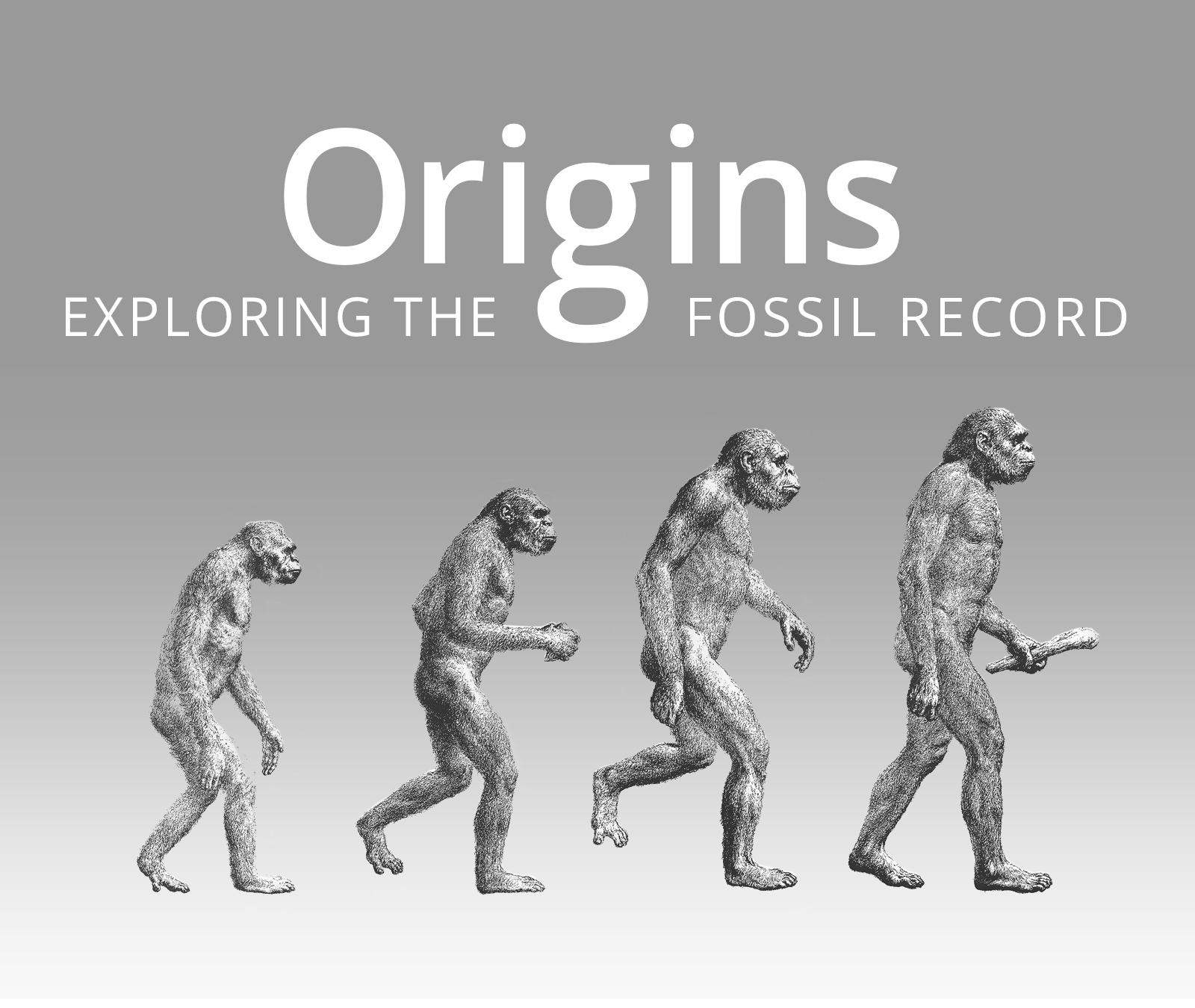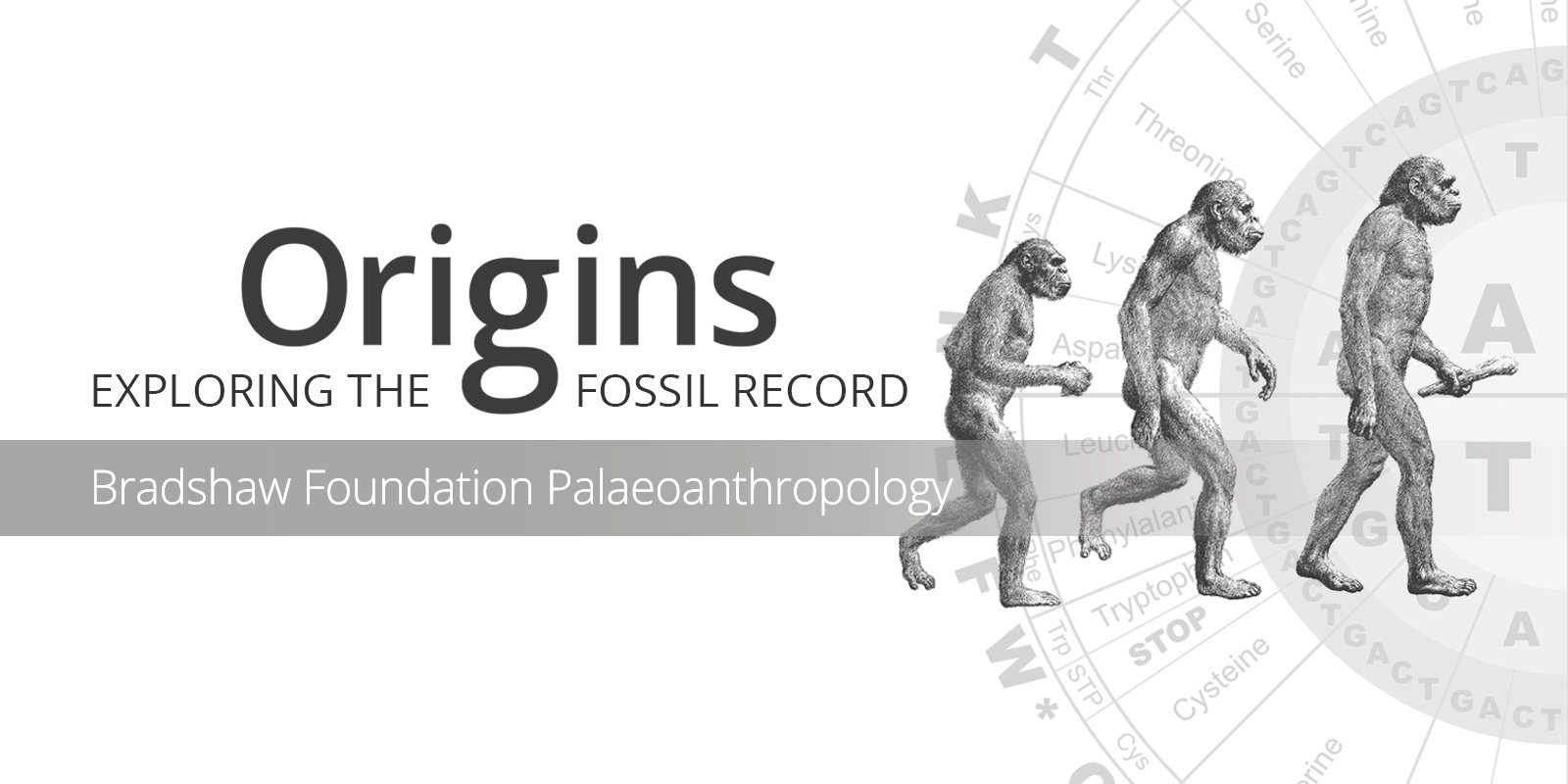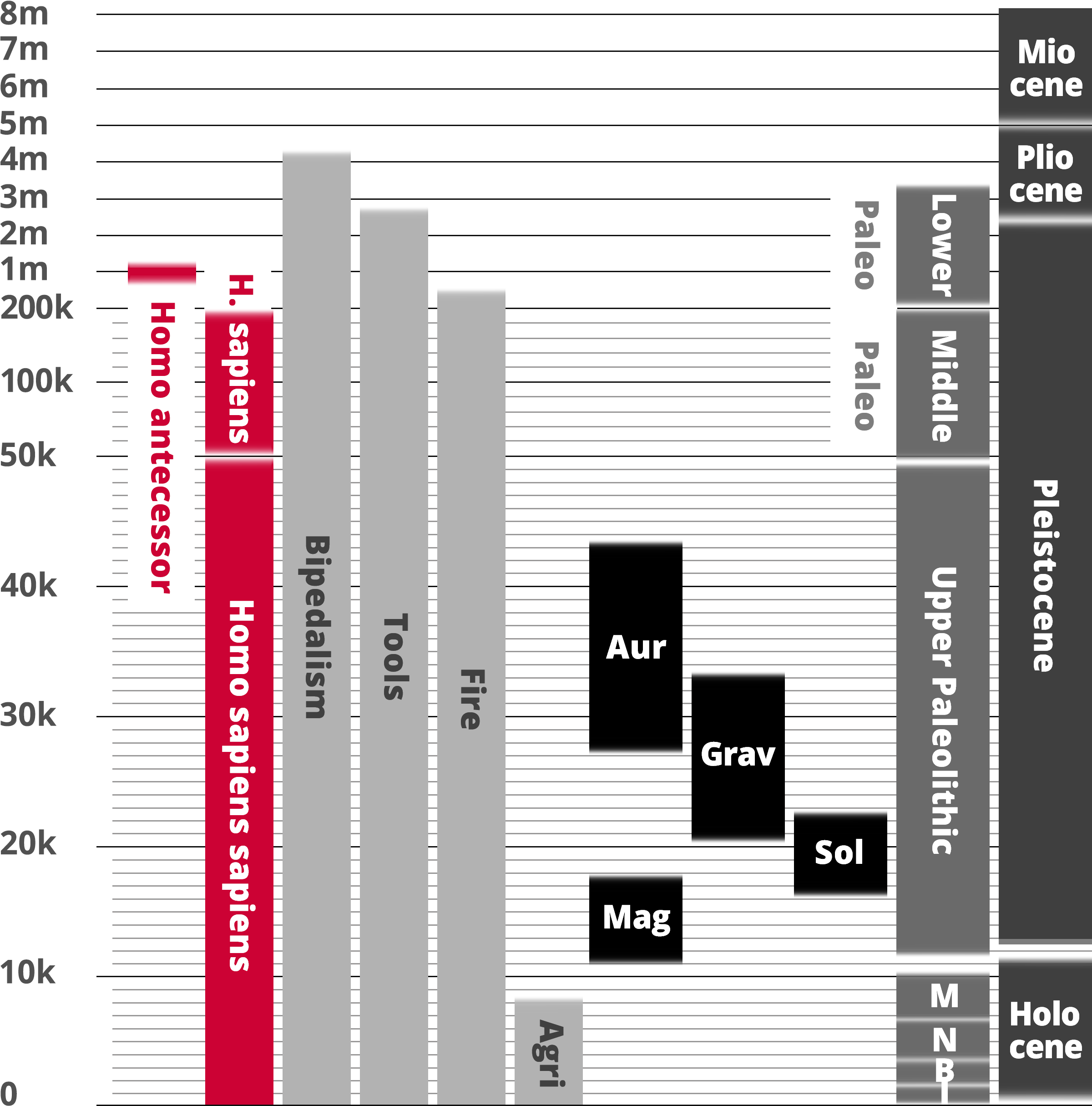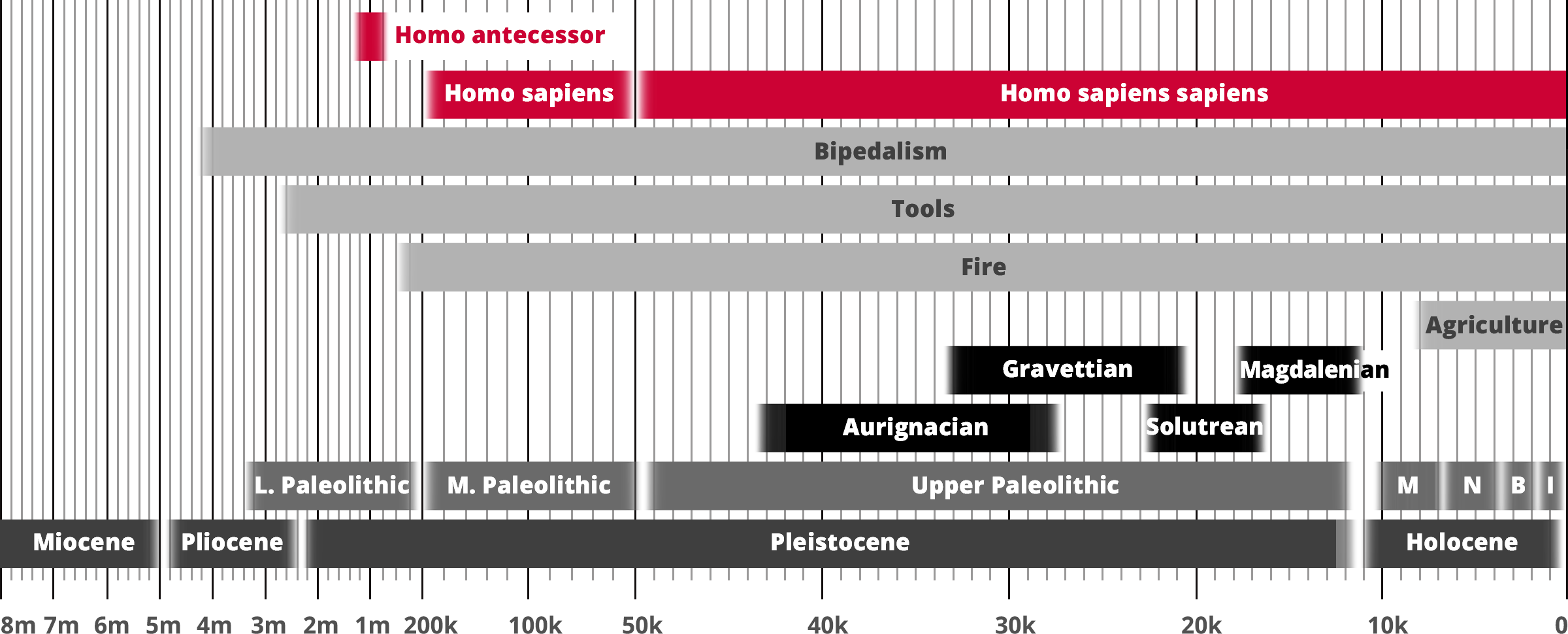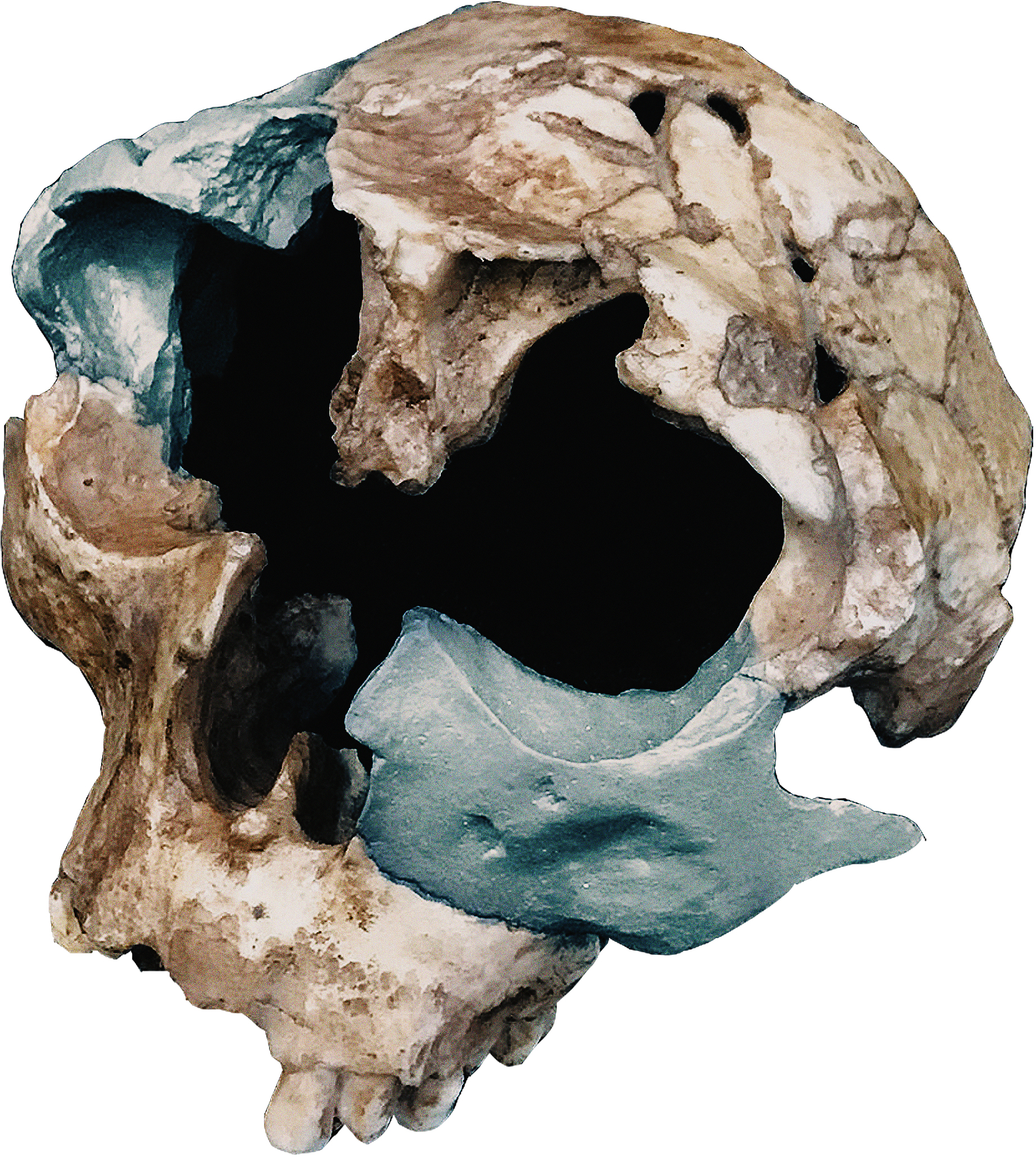Homo antecessor
Homo sapiens
Hominin traits
Archaeological industry/Technocomplex including art
Period in human prehistory: M = Mesolithic; N = Neolithic; B = Bronze Age; I = Iron Age;
Geological epoch
* Note: Table based past and current research and scientific consensus
Homo antecessor
Homo sapiens
Hominin traits
Archaeological industry/Technocomplex including art
Aur = Aurignacian; Mag = Magdalenian;
Grav = Gravettian; Sol = Solutrean
Period in human prehistory:
M = Mesolithic; N = Neolithic;
B = Bronze Age; I = Iron Age;
Geological epoch
* Note: Table based past and current research
and scientific consensus
| HOMO ANTECESSOR |
 |
| Genus: |
Homo |
| Species: |
Homo antecessor |
| Time Period: |
1.2m to 800,000 years ago |
| Characteristics: |
Tool Maker, European |
| Fossil Evidence: |
Fossils, Sierra de Atapuerca, Spain |
Homo antecessor (Latin "pioneer man") is an extinct human species dating from 1.2 million to 800,000 years ago, that was discovered in the Sierra de Atapuerca of northern Spain by a team led by Eudald Carbonell in 1994. Homo antecessor is one of the earliest known human varieties in Europe [Falguères 1999].
There is still debate over how Homo antecessor is related to other Homo species in Europe, and where it sits on the evolutionary tree. One theory suggests that it was an evolutionary link between
Homo ergaster and
Homo heidelbergensis. Another theory is that Homo antecessor is a separate species that evolved from Homo heidelbergensis. Finally, that Homo antecessor is the same species as Homo heidelbergensis, who inhabited Europe from 600,000 to 250,000 years ago in the Pleistocene.
The fossil of the upper jaw discovered in Spain belonged to a child, and is dated to approximately 800,000 years ago. Other fossil bones discovered in Spain and attributed to Homo antecessor show cuts, which may suggest cannibalism.
The Homo antecessor male would have stood approximately 1.6-1.8 meters tall, weighing around 90 kg. Their brain sizes were roughly 1,000-1,150 cm3, smaller than the 1,350 cm3 average of modern humans. It would have had a low forehead and small lower jaw and chin. In many ways, it would have resembled Homo ergaster and 'Turkana Boy'. There is evidence to suggest rudimentary speech.
Fossil and tools remains have also been discovered in England, suggesting that Homo antecessor lived in England about 950,000 years ago - the earliest known population of the genus Homo in Northern Europe [Moore 2010].
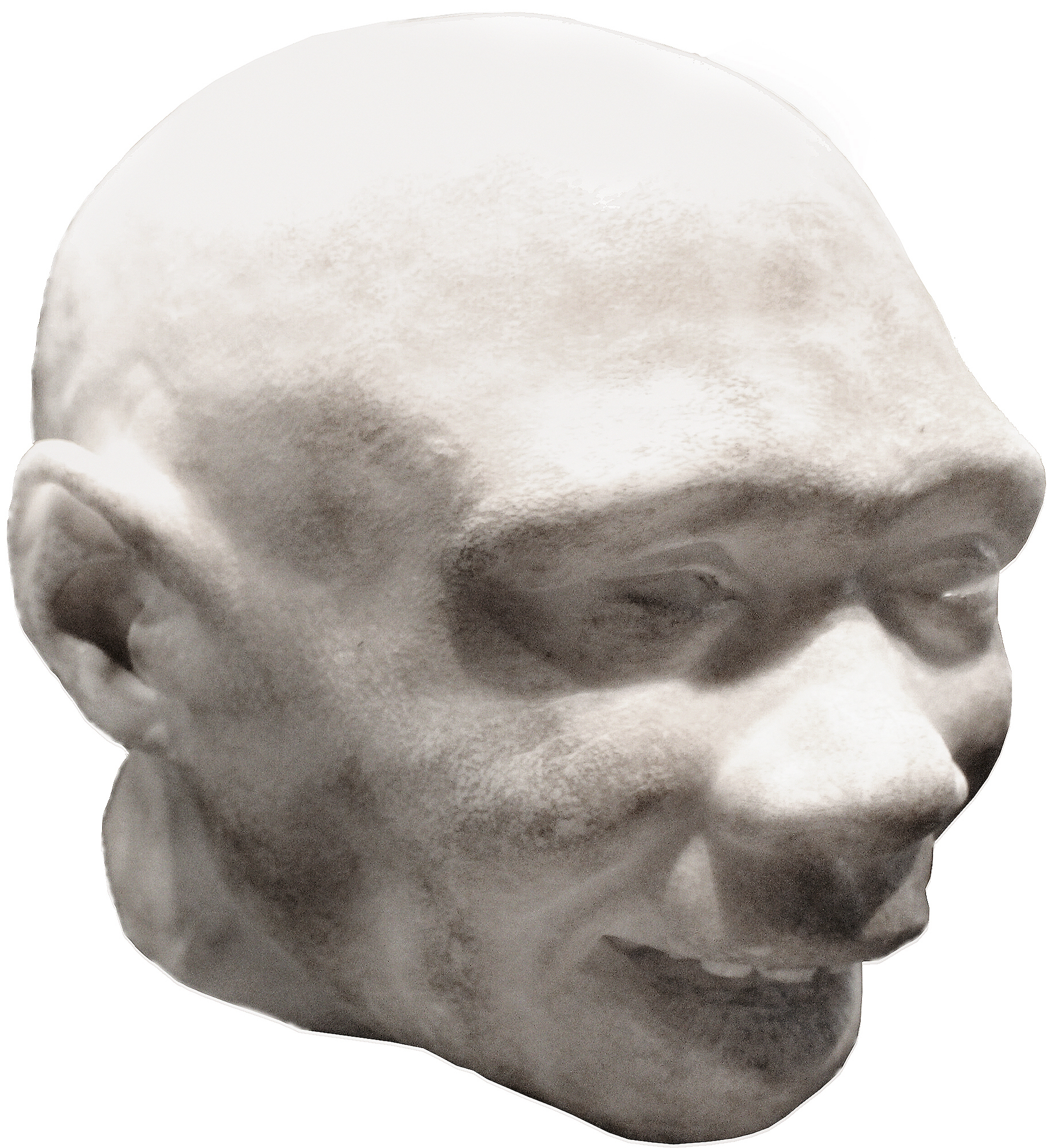
Bust of Homo antecessor child
Excavations in the Spain's Cuenca province have found stone tools that date back to over one million years. Archaeologists Santiago David Domínguez and Míchel Muñoz, under the auspices of Ares Arqueologia, believe the tools maybe attributed to Homo Ergaster (2 - 1.3 mya) and Homo Antecessor (1.2m - 800,000 ya). Indeed, the tools were used by the earliest humans to settle and occupy the Iberian Peninsula.
The archaeological site itself is merely one of 20 in the region of la Meseta - the high plains of central Spain - and the team hope to discover many more clues to understand the early colonization of the Iberian peninsula by early hominids.
The excavated hewn quartzite tools were used as choppers, to cut meat and wood. These tools represent the first instances of technological innovation in human history, wherein our ancestors first began to enhance their biological abilities with the manufacture of stone tools. This speaks to an important milestone in the evolution of our ancestors. Tool production and use is thought to be intimately linked to, if not the instigator of, major changes in cognitive development; geographic ranges; and morphological features like body and brain size. Although the exact nature of these relationships remains contested, better understanding of these issues will inform our state of knowledge on subjects from the evolution of human cognitive sophistication to the timing of our genus' first use of fire or hunting.

